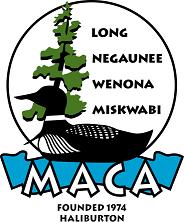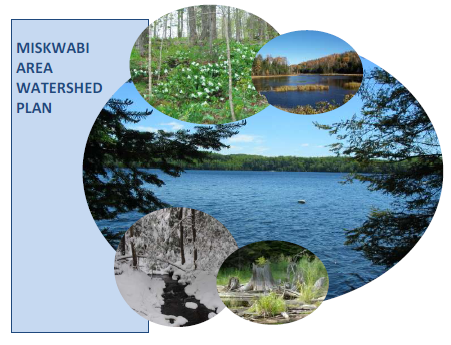

          
|

MACA Lake Planning OFFICIAL PLAN REVIEW The Municipality of Dysart and the County of Haliburton are in the process of updating their Official Plans. The Official Plan is the policy document that guides how land is used. From time to time these Official Plans are reviewed and revised with input from the public, and from groups such as MACA. For information about the Official Plan review process, visit Dysart's Official Plan Review Page. Official Plans are important to us, because they affect public policy on land use and development. MACA is actively involved in the Official Plan review process. For more information on MACA's involvement, the following documents are available:
Four years in the making - the Miskwabi Area Watershed plan is available in print! 72 full-colour pages of geological and natural history, area maps, and more. An introductory DVD with photos, artwork and original music also accompanies the book. Get your copy today while supplies last! or e-mail miskwabiareawatershedplan@gmail.com You can also download a PDF copy of the Watershed Plan by clicking on the link below: Members of the Miskwabi Area Watershed Plan Committee: Stuart Buck - Miskwabi Susanne James - Long/Miskwabi Rick Despard - Miskwabi Phyllis McCulloch - Wenona Peter Dilworth - Long Tim Payment - Miskwabi Michael Giza - Miskwabi Tom Pendlebury - Negaunee Haden Heathcock - Miskwabi Neil Roberts - Long Larry Holden - Miskwabi Brief History of MACA's Lake Planning Process By Mike Giza, Director At the MACA Annual General Meeting in July 2010, there was a presentation on lake planning and a discussion of the process. As explained in the Lake Planning Handbook for Community Groups, lake planning is a strategic process that provides an opportunity to engage all the people, governments and business operators to develop plans and implement actions to maintain or improve the natural and social qualities of life on Ontario lakes and rivers. Beginning in 1999, the approach to planning shifted to a "bottom up" process from a "top down" one. This gives the communities involved a voice in establishing stewardship actions and government regulations. During the past ten years many Haliburton lakes have developed plans. Some of these are: Eagle Lake, Kennisis Lake, Halls and Hawk Lakes and Mountain Lake. Below is an outline based on the Planning Handbook of the steps and timelines that would be involved in pursuing a lake plan for our watershed. THE LAKE PLANNING PROCESS Phase 1 Getting Organized
This phase can take 1 to 2 years. The planning manual recommends going slow initially to set a correct course and avoid serious difficulties. Target date for completion - July 2011 Phase 2 Collect Background Information
Target date for completion - July 2012 Phase 3 Analyze and Summarize Background Information
Target date for completion - July 2013 Phases 4, 5 and 6 Prepare, Review and Obtain Approval of Draft Plan
Target date for completion - July 2014 Phase 7 Action Plan Implementation
Target date for completion - Fall 2014 Phase 8 Monitoring and Updating the Lake Plan
This schedule for developing and implementing the Lake Plan, if the dates are followed, should tie in closely to the 5- year Dysart planning cycle. Webmaster for MYMACA.NET: Andy Mosher |
